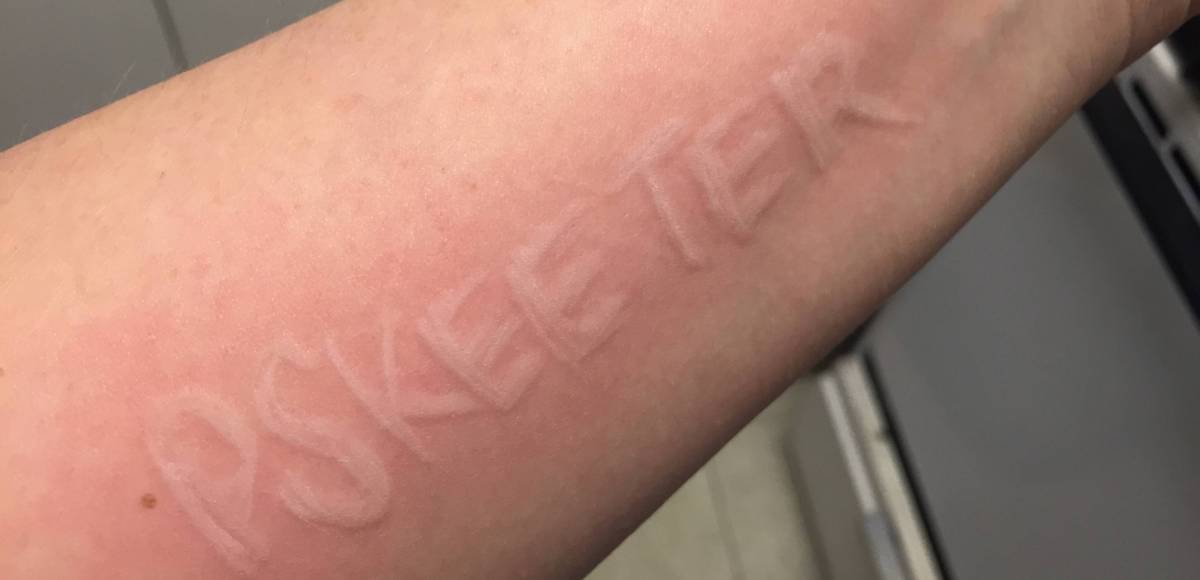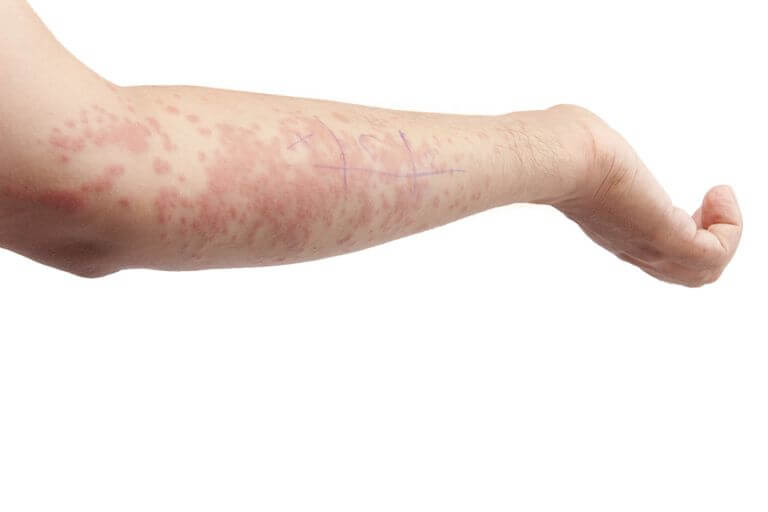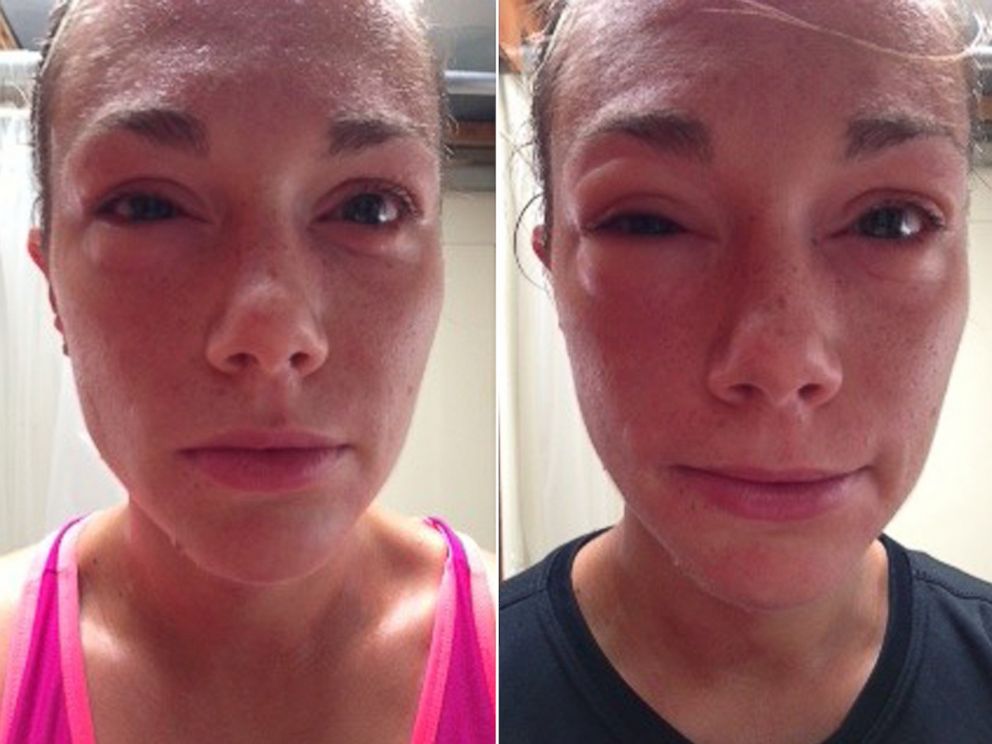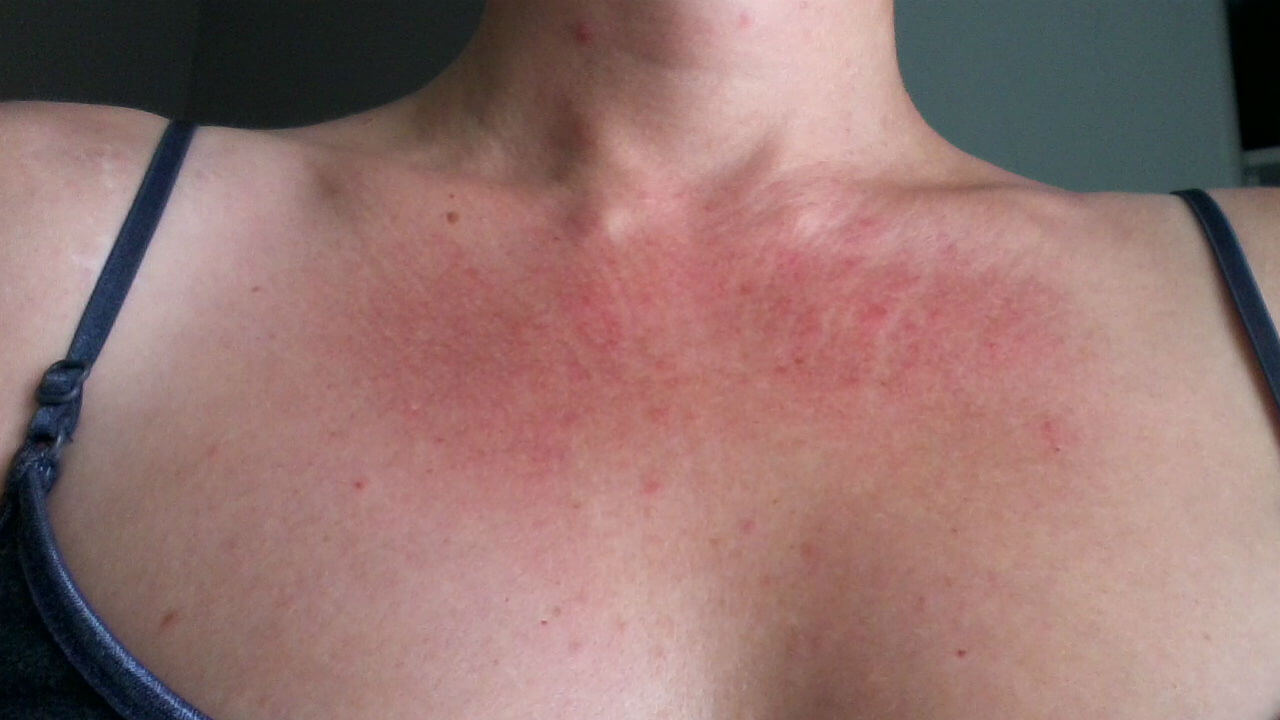When you think of allergies, the first thing that comes to mind is probably seasonal allergies, like a sneezing fit over some pollen, or a food allergy that’s closed up somebody’s throat. But they’re more than just pollen and peanuts.
Allergies can happen in response to a lot of things because they’re basically the result of your body overreacting to something. Your immune system thinks it’s dangerous, even though it really isn’t. And in the end, the inappropriate response becomes the problem.
We’re used to certain allergies because we see people who are allergic to the same ten foods, or the same plants and animals, all the time. It’s possible that these allergies are more common because they look kind of similar to each other, at least at the molecular level. And they also look kind of similar to certain proteins on parasitic worms.
So, some researchers think these overreactions are really just a side effect of the immune system trying to protect itself against a certain type of invader. But there are also a handful of weird allergies that make even less sense because in a few cases, it’s hard to say what the offending protein might be. And some of those can be much harder to avoid than even a peanut butter sandwich like water, or your own hormones. So here are 7 of the strangest allergies out there.
Touch

People with dermographism are allergic to touch, and if they want, they can sign their name on their arm, or write out the name of their condition on their back.
What’s actually going on here is an exaggerated version of a normal response skin has to touch. For most people, if you say, drag a capped ballpoint pen across your arm, you’ll create a line that gets red and swells a bit. In about 2-5% of people, this is more extreme, so it looks like a full-blown hive. In that sense, demographic isn’t all that rare.
What’s less common is the more extreme version. In some people the skin itches, and in some cases it takes hardly any pressure at all, like just that from a T-shirt.
For some reason physical touch causes a type of immune cell in their skin, known as a mast cell, to release histamine. Histamine is a chemical that, among other things, makes blood vessels open up a little bit . This lets fluid out, and you get that raised welt, or what doctors call urticaria.
Urticaria is a common allergic reaction, but usually, we have some sense of why it happens, because histamine release from mast cells depends on antibodies. A bunch of antibodies stick to mast cells, and if they see something they recognize, like tree pollen, or dust mites, that triggers the mast cell to unleash histamine. But in the case of dermographism, and several of the other so-called physical urticarias, scientists aren’t sure what’s happening because there’s no obvious thing the antibodies would recognize. That’s part of the mystery.
Unless there’s a genetic cause, most of these urticarias develop in young adulthood, but could start in childhood or even late in life. The good news is that because histamine is driving a lot of the allergic reaction, allergy meds called antihistamines, which prevent histamine from binding to their receptors and taking effect, can usually help.
Sources:
Dermographism – by – DermNet NZ
Dermographism Urticaria – by – Medscape
Evaluation of patients with symptomatic dermographism – by – NCBI
Vibration

Another unusual physical allergy is vibration, or vibratory urticaria. If someone with this condition does something repetitive, like running or even just clapping their hands, they can break out in hives within minutes. This can happen multiple times a day in some people, and they can have other symptoms, like swelling in their face.
Something about vibration is able to set off mast cells. In this case, we actually know a bit more than with dermographism, because some cases of the condition are genetic.
People with a genetic allergy to vibration have a mutation in a protein that’s on the outside of mast cells. The protein has two subunits, but the mutation makes it harder for them to stay together, so with vibration, one of the subunits falls away. Without it, mast cells get the signal to let loose their cargo, and they get hives.
Sources:
Vibratory urticaria – by – NIH
NIH scientists discover genetic cause of rare allergy to vibration – by – NIH
Cold

Then there are the people with an allergy to the cold. And no, this is not just a dislike of waiting for the bus in the winter time.
Cold urticaria is another physical urticaria, and it can be serious. Touching cold objects or coming into contact with cold air or water causes welts, along with angioedema, where the lower layers of the skin swell.
The reason why this physical allergy tends to be more dangerous is because it’s pretty easy to suddenly be totally surrounded by cold water say, if you’re swimming, or if someone flushes the toilet while you’re in the shower.
With so many mast cells releasing histamine throughout their body, someone with an allergy to the cold can go into anaphylaxis, which involves difficulty breathing and low blood pressure, and can be deadly.
So, yes, it’s actually a pretty decent excuse to live in Florida. Or Maui. Just be wary of swimming and cold drinks.
Water

It’s called aquagenic urticaria. The condition is extremely rare. One estimate is that there are only 32 people on the entire planet with the condition. So scientists don’t have a great understanding of it. But as you can probably guess, it gets in the way of a lot of things, not least bathing and drinking. And it makes the rain not only annoying but dangerous.
People with the condition get small hives within a half-hour of water exposure, most often on the upper parts of their bodies, like the neck and arms. Their throat can start to swell when they drink water, and their own tears or sweat can also produce the reaction. Once water is actually inside their tissues, though, it seems to be fine.
As with the other physical urticarias, antihistamines can help at least enough for someone with the allergy to stay hydrated. They don’t always work, though, and some people go as far as putting creams or things like petroleum jelly on their skin to prevent contact with water.
Sources:
Aquagenic urticaria – by – NIH
The woman who is allergic to water – by – BBC
Here’s What Happens When You Develop an Allergy to Water – by – ScienceAlert
Exercise

An allergy to exercise, or what medical professionals call exercise-induced anaphylaxis. Now, you might be thinking, “excellent, what a great excuse to skip the gym!” But as you can probably tell from the word “anaphylaxis,” this condition can be pretty serious.
People will usually start out by getting hives and wheezing, maybe with some nausea and diarrhea thrown in. Things will get better if they stop exercising, but if they keep going, their blood pressure will drop, their throat will swell, and eventually their heart will stop pumping blood. That’s not very good, for obvious reasons, and several people have died.
Fortunately, exercise-induced anaphylaxis is rare. It’s more common for people to just develop hives. Scientists aren’t sure why it happens, but for some reason exercise triggers mast cells to release lots of histamine and other proteins.
One idea, which is still very much unproven, is that endorphins, which are basically the body’s feel-good chemicals, help stimulate the mast cells to release their inflammatory goodies.
We know endorphins have the ability to do this sometimes, and you release endorphins when you exercise. More strenuous activities, like running or biking, are more likely to spur an attack, but some people will have an allergic response to something as simple as a raking leaves or walking.
Being allergic to exercise is already pretty strange, but in some cases, there’s an extra twist, and the person only has the allergic response if they eat a certain food first. This is called food-dependent exercise-induced anaphylaxis. Everyone’s food triggers are different, but common ones are things like shellfish, wheat, and tomatoes. If they exercise within several hours of eating that food, they’ll have an allergic reaction.
Why this happens is also a mystery, but scientists suspect that part of it has to do with the fact that exercise makes the cells lining the gut become less attached to one another, letting more of the contents slip through. That makes immune cells more likely to come into contact with allergens from the food the person just ate. If they also drink alcohol, symptoms tend to be worse.
The exercise could be doing a bunch of other things too, though, like changing how food is broken down, or altering something else about the immune system in the gut. We don’t really know.
But in this case, the allergy is pretty easy to avoid. Once you know your trigger foods, either don’t eat them, or if you do, plan to spend the rest of the afternoon on the couch. For those with just the exercise allergy, doctors recommend carrying Epipens in case of an attack, and learning the initial symptoms so they can stop exercising quickly, or training with a partner who knows about the allergy and is prepared to help if it starts to get out of hand.
Sources:
Exercise-Induced Anaphylaxis – by – Medspace
Exercise-Induced Anaphylaxis and Urticaria – by – AAFP
Semen

This, as you might imagine, makes sex a little difficult. It’s called human seminal plasma hypersensitivity, and it’s thought to be a fairly straightforward, if unfortunate, allergy to proteins in semen. It seems to be more common in biological females, and has mostly been studied as a female health problem, but males can react to semen too, even their own.
Scientists aren’t sure yet which proteins are the problem, although one candidate is a prostate-specific antigen, or PSA, the same protein that doctors will sometimes monitor for prostate cancer.
The allergy shows up as a burning, itchy redness anywhere else the seminal fluid might touch. It can also become a systemic reaction, producing hives on different parts of the body, and cause wheezing and difficulty breathing. Some people have even gone into anaphylactic shock.
Typically, using condoms during sex helps, as long as the person with the allergy isn’t the one producing the semen. Some people also keep epipens on standby. But allergists have also come up with ways to desensitize people to the proteins they overreact to. It’s similar to an allergy shot you might get for a more typical allergen, like pollen.
Except here, you get increasing doses of your partner’s semen applied to your vagina. Or, if you don’t have a vagina, allergists will isolate the proteins you react to, and then inject them under your skin.
Either way, to keep that built-up tolerance, doctors advise patients to have sex every 2 days or so. Even though the allergy is rarer in males, some scientists think it could be behind something called postorgasmic illness syndrome, which is when males develop flu-like symptoms shortly after they ejaculate, and can feel sick for up to a week.
Sources:
Anaphylaxis to husband’s seminal plasma and treatment by local desensitization – by – BMC
Allergic reactions to seminal plasma – by – UpToDate
What is a sperm allergy? – by – ISSM
This Mysterious Post-Orgasm Illness Could Be Caused by Semen Allergy – by – ScienceAlert
Postorgasmic illness syndrome – by – NIH
Postorgasmic illness syndrome – by – Nature
Progesterone

If you think a semen allergy is bad, consider something called autoimmune progesterone dermatitis. This is when someone reacts to their own menstrual hormones, specifically progesterone. Progesterone levels start to go up about halfway through the menstrual cycle, and that’s when the problems begin.
The surge of progesterone can cause rashes, hives, or mouth sores, which last until the person’s period begins and progesterone levels drop.
Because of the recurring nature of the rashes, this is sometimes called cyclic urticaria. With fewer than 100 cases on the books, scientists know very little about it. Since it’s a reaction to a person’s own hormones, it’s technically considered an autoimmune disease, but it shares many features of an allergic response, including the possibility of anaphylaxis.
Doctors usually treat patients with hormone therapy to prevent the usual production of progesterone, and a variety of medications can help. If it’s bad enough, though, sometimes people choose to remove their ovaries. And that’s really what makes these kinds of allergies so strange and difficult.
Normally, if you’re allergic to mold spores, pets, or certain foods, you can mostly get around them by avoiding those things. But try avoiding water, the cold, or your own monthly hormonal fluctuations. You either have to completely rearrange your life to avoid those things, if it’s even possible at all. You might need surgery to remove otherwise perfectly good organs. Or, with the semen allergy, it can dictate your sex life.
Of course, even the more common types of allergies aren’t exactly fun. But it could be a lot worse than getting hives after an encounter with your neighbor’s cat.
Sources:
Autoimmune progesterone dermatitis – by – NIH
Autoimmune Progesterone Dermatitis: A Case Report – by – NCBI



